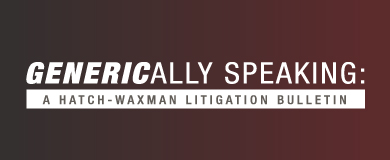- Acumen Powered by Robins Kaplan LLP®
- Affirmative Recovery
- American Indian Law and Policy
- Antitrust and Trade Regulation
- Appellate Advocacy and Guidance
- Business Litigation
- Civil Rights and Police Misconduct
- Class Action Litigation
- Commercial/Project Finance and Real Estate
- Corporate Governance and Special Situations
- Corporate Restructuring and Bankruptcy
- Domestic and International Arbitration
- Health Care Litigation
- Insurance and Catastrophic Loss
- Intellectual Property and Technology Litigation
- Mass Tort Attorneys
- Medical Malpractice Attorneys
- Personal Injury Attorneys
- Telecommunications Litigation and Arbitration
- Wealth Planning, Administration, and Disputes
Acumen Powered by Robins Kaplan LLP®
Ediscovery, Applied Science and Economics, and Litigation Support Solutions
-
June 1, 2022Chambers USA Recognizes Five Robins Kaplan Practice Groups And 17 Lawyers In 2022 Guide
-
June 1, 2022Seasoned Attorney Joins Firm’s Business Litigation Group
-
May 26, 2022Shira Shapiro Named Woman of Promise By The Pearl Society
-
June 3, 202219th Annual Advanced Insurance Law
-
June 9, 2022Building Your Brand: Perspectives and Insights from a Diverse Bar
-
June 10, 2022LGBTQ Legal Services: Transgender Name Change Clinic
-
May 24, 2022Briefly: Seeking Fees and Costs While on Appeal
-
May 19, 202211th Circ. Ban On Service Awards May Inhibit Class Actions
-
May 13, 2022Trademark Applications and the Murky Waters of Subject Matter Jurisdiction
-
June 2, 2022Sandberg Stepping Down as Meta COO After 14 Years
-
June 1, 2022Markets Revert to Recent Form as Pessimism Takes Hold
-
May 27, 2022Unexpectedly Strong Retail Sales Pull Markets Back from the Brink
Find additional firm contact information for press inquiries.
Find resources to help navigate legal and business complexities.
Genzyme Corp. v. Dr. Reddy’s Labs., Ltd.
Because a POSA would not have had a reasonable expectation of success that a reference disclosing increasing white blood cells also disclosed increased stem-cell mobilization, the asserted claim was not obvious.
December 18, 2017

Case Name: Genzyme Corp. v. Dr. Reddy’s Labs., Ltd., No. 16-2206, -2207, 2017 U.S. Fed. Appx. LEXIS 25454 (Fed. Cir. Dec. 18, 2017) (Circuit Judges Moore, Plager, and Chen presiding; Opinion by Chen, J.) (Appeal from D. Del., Sleet, J.)
Drug Product and Patent(s)-in-Suit: Mozobil® (plerixafor); U.S. Patent No. 7,897,590 (“the ’590 patent”)
Nature of the Case and Issue(s) Presented: Genzyme developed a method for mobilizing and harvesting stem cells by sequentially administering two drug products. Specifically, the ’590 patent made use of a regimen comprising a combination of granulocyte-colony stimulating factor (G-CSF) and plerixafor to increase the number of stem cells in the blood for collection. Following a four-day bench trial, DRL filed a motion under Fed. R. Civ. P. 52(c) for a judgment on partial findings on its affirmative defense and counterclaim asserting invalidity of claim 19 of the ’590 patent. The district court found claim 19 not invalid as obvious and entered a final judgment enjoining DRL from commercially manufacturing, using, offering for sale, selling, or importing its generic products. DRL timely appealed, and the Federal Circuit affirmed.
Why Genzyme Prevailed: As part of its obviousness challenge, DRL relied on three prior-art references: (i) Hendrix; (ii) WO ’814; and (iii) the ’304 patent, and combinations thereof. The district court, however, found that Hendrix was not analogous art. In particular, whereas Hendrix focused on HIV treatment, the ’590 patent focused on mobilizing stem cells for subsequent harvest and transplantation. But even if Hendrix were deemed analogous art, the district court found that Hendrix would not have rendered claim 19 obvious. The district court found that a skilled artisan would not have had a reasonable expectation of success that plerixafor would mobilize stem cells, and the Federal Circuit agreed that DRL has not shown that this determination was clearly erroneous. Although Hendrix hypothesized in an isolated sentence, without explanation, that plerixafor may cause stem-cell mobilization, the rest of the seven-page article focused on the elevation of white-blood-cell counts. The Federal Circuit also found that the district court’s finding that stem-cell mobilization was highly unpredictable at the time of the invention ran counter to an expectation of success.
As with Hendrix, the Federal Circuit found that WO ’814 did not disclose information about using plerixafor to mobilize stem cells, but instead revealed the relationship between plerixafor and white-blood-cell elevation. The Federal Circuit also found that the record included ample evidence showing that an increased white-blood-cell count did not necessarily correlate with stem-cell mobilization, and that, ultimately, the deficiencies regarding Hendrix also undercut the combination of WO ’814 and the ’304 patent. “It is also significant that a gap exists between using plerixafor to enhance WBC [white-blood-cell] counts and for stem cell mobilization.”
Related Professionals
Related Publications
Related News
If you are interested in having us represent you, you should call us so we can determine whether the matter is one for which we are willing or able to accept professional responsibility. We will not make this determination by e-mail communication. The telephone numbers and addresses for our offices are listed on this page. We reserve the right to decline any representation. We may be required to decline representation if it would create a conflict of interest with our other clients.
By accepting these terms, you are confirming that you have read and understood this important notice.
